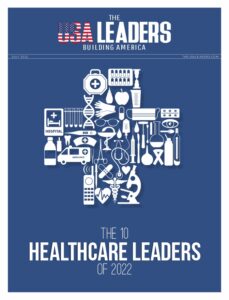Cybersecurity is non-negotiable for any business today. But in healthcare, the stakes are much higher. This sector holds some of the most sensitive and valuable data—medical histories, insurance details, and social security numbers—all of which are prime targets for cybercriminals. A breach here isn’t just a financial risk; it’s a matter of patient trust, legal liability, and sometimes even life-or-death situations.
With the pressure to digitize records, integrate new technologies, and ensure compliance, many healthcare businesses find themselves struggling to keep up with the challenges.
That’s why building strong cybersecurity measures is more urgent than ever. It’s not just about prevention—it’s also about preparation and response.
This article explores eight key strategies to help your healthcare organization reduce risk, improve cyber resilience, and respond effectively when threats arise.
1. Implement Role-Based Access Controls (RBAC)
Not every employee needs access to every system. Role-based access controls help limit who can see and interact with sensitive data. A front desk assistant doesn’t need access to the same patient records or administrative functions as a senior physician or billing manager. Limiting access reduces the number of potential entry points an attacker can exploit.
This principle also makes it easier to isolate incidents when something does go wrong. If a user account is compromised, RBAC ensures that the damage is contained within that user’s scope. Regular reviews and audits are crucial to keep access permissions aligned with current roles.
2. Prioritize Cyber Crisis Management
While prevention is important, organizations must also plan for the day something goes wrong. Cyber crisis management is more than an incident response checklist. It’s about building a strategy that helps you manage chaos in real-time.
Ready1, for instance, promotes a holistic response that involves technical teams, leadership, legal experts, and communication staff. Rather than viewing an attack as a simple problem with a linear solution, Ready1 recognizes that crises evolve rapidly. It helps organizations map out their digital environment, understand how an attack can spread, and coordinate responses across departments. By applying this model, healthcare businesses can react quickly and minimize the impact of a breach—keeping both data and patient care intact.
3. Keep Software and Systems Updated
Outdated software is a welcome sign for hackers. Many of the most effective attacks exploit known vulnerabilities that vendors have already patched. Unfortunately, healthcare organizations often run older systems or delay updates due to operational constraints.
Setting up automatic updates where possible can eliminate this gap. When automation isn’t an option, a clearly scheduled patching process must be in place. IT teams should maintain an inventory of all systems, devices, and applications in use and prioritize critical patches based on exposure and severity.
4. Encrypt Patient Data—At Rest and In Transit
Encryption protects data even when attackers gain access to systems. Whether it’s files stored on a local server or information transmitted through email, encrypting data ensures it’s unreadable without proper authorization. This is especially critical for compliance with regulations like HIPAA, which mandates safeguards for electronic health information.
Healthcare organizations must use strong encryption protocols and regularly update their methods. Data should be encrypted both when it’s stored (at rest) and when it’s being transferred (in transit). Encryption alone doesn’t guarantee safety, but it makes stolen data far less valuable and useful.
5. Train Staff to Recognize and Report Threats
People are often the weakest link in any cybersecurity framework. In healthcare, where employees are constantly under pressure and often multitasking, it becomes even easier for attackers to slip past defenses using social engineering. A single click on a phishing email or the accidental sharing of credentials can give cybercriminals access to critical systems.
Training staff is not just about holding an annual cybersecurity seminar. It should be a continuous effort that adapts to the latest threats. Regular workshops, real-time phishing simulations, and internal newsletters help keep security top of mind.
6. Strengthen Endpoint Security
Healthcare workers access data through a wide range of devices: desktops, tablets, mobile phones, and even remote laptops. Each device connected to your network is an endpoint, and each one can be exploited if not secured properly. That’s why endpoint security is no longer optional.
A strong endpoint protection strategy involves more than just antivirus software. It includes real-time threat detection, automatic remediation, firewalls, device encryption, and the ability to wipe lost or stolen devices remotely. In a healthcare setting, devices often move across departments or between locations, so visibility and control are key. Centralized endpoint management platforms can give IT teams insight into device health, user activity, and vulnerabilities before they turn into serious threats.
7. Back Up Everything—And Test Recovery Procedures
Data backups are your safety net, but they’re only useful if they’re reliable and accessible during a crisis. Many healthcare businesses think they’re covered just because they back up data weekly or monthly. But without testing the recovery process, there’s no guarantee those backups will work when needed.
Ideally, backups should be automated, encrypted, and stored in at least one off-site location or in the cloud. They should include patient records, system configurations, billing information, and anything else essential to operations. Just as important is the regular testing of these backups—simulate a breach and restore from backup to make sure the process works efficiently and completely. This protects against cyberattacks and helps recover from hardware failures or human error.
8. Work with Cybersecurity Experts and Vendors
Healthcare organizations often operate with limited IT resources and face complex compliance requirements. Working with external cybersecurity experts can fill knowledge gaps and bring in specialized tools and processes that would be difficult to build in-house.
Cybersecurity vendors can provide services like penetration testing, 24/7 monitoring, security audits, and incident response support. Choose vendors who understand the healthcare environment and are familiar with regulations like HIPAA and HITRUST. A good partner won’t just provide tools—they’ll help you integrate them into your existing operations, monitor them proactively, and adapt as new threats emerge.
Cyber threats are not slowing down—and healthcare remains one of the most targeted industries. With sensitive data, urgent workflows, and life-critical systems, the consequences of a breach can be devastating. But healthcare businesses don’t have to remain easy targets. By following the strategies outlined in this article, organizations can significantly strengthen their defenses.
Cybersecurity in healthcare is about protecting more than just data. It’s about protecting people. The path to resilience begins with taking these steps seriously and making them part of everyday operations.
Also Read: Top Seven Tips for Digitizing Your Healthcare Practice Efficiently





















